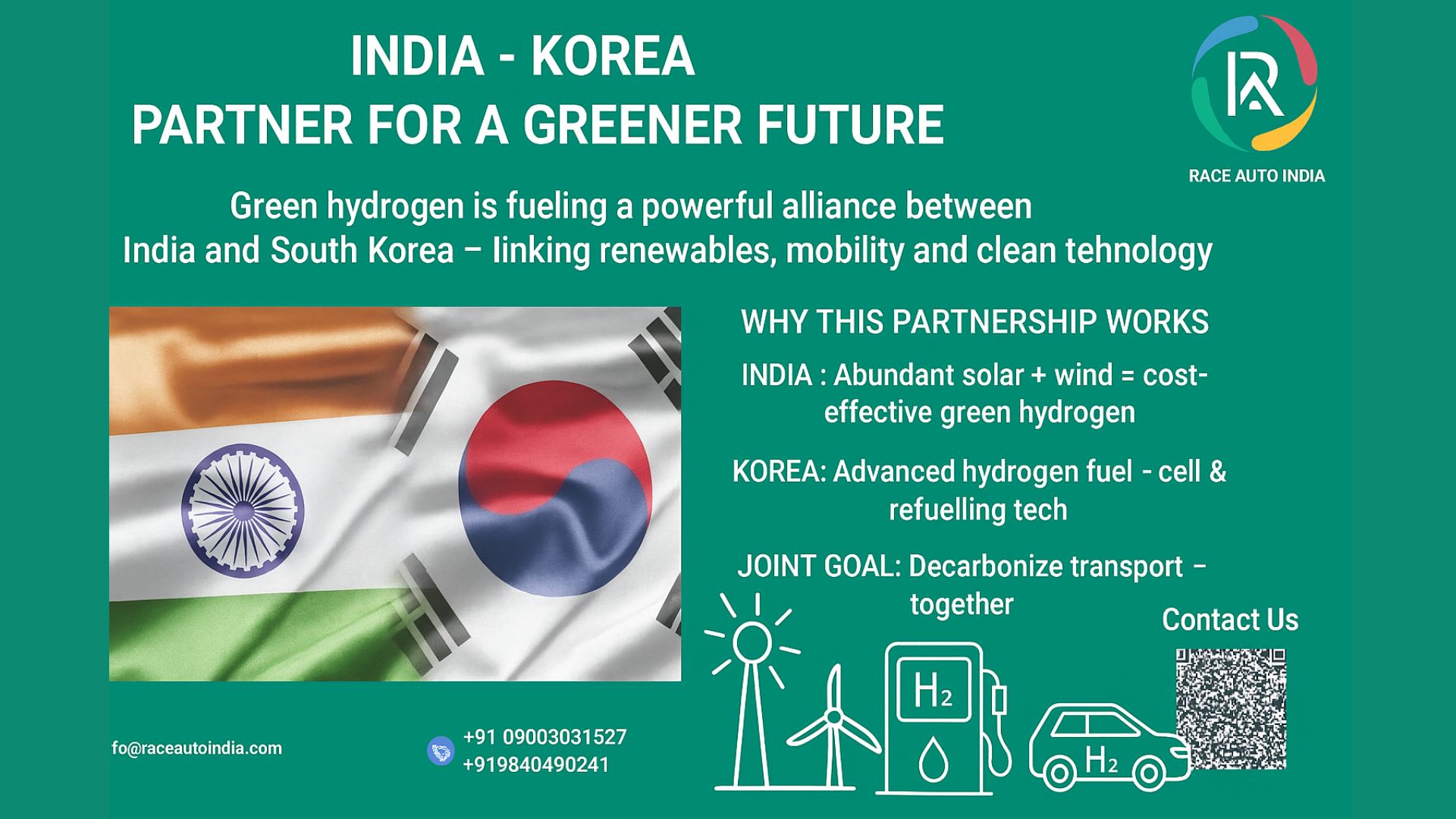India and Korea Partner for Green Hydrogen Mobility
India and South Korea are working together to grow the green hydrogen sector. India makes low-cost hydrogen, and Korea provides advanced technology. This partnership supports clean energy trade, hydrogen vehicles, and joint innovation for a cleaner future.
1794 views | Date: June 17, 2025
India/South Korea- As the world rapidly moves toward cleaner energy solutions, India and South Korea have stepped forward to form a strategic partnership centered on green hydrogen. This collaboration is more than a bilateral trade agreement it is a joint mission to build a sustainable, low-carbon future powered by trust, technology, and innovation.
India has a lot of natural sunlight and wind, which helps the country produce renewable energy at a low cost. This clean energy can be used to make green hydrogen in large amounts, making India an important supplier in the future of clean fuel.
South Korea using hydrogen technology. It has strong skills in making hydrogen-powered vehicles, such as fuel cell cars, buses, and trucks. Korea also has the tools and knowledge to build the systems needed to use hydrogen as fuel.
By working together, India can make the hydrogen, and Korea can use it to power vehicles and machines. This partnership connects the two most important parts of the green hydrogen chain—fuel production and clean mobility.
Hyundai Motor India is getting ready to launch its first hydrogen fuel cell electric vehicle (FCEV). This vehicle will run on green hydrogen produced in India, showing how both countries are working together to support clean mobility.
Indian companies like ACME Group and Avaada have signed several agreements to build green hydrogen and ammonia export hubs. These large projects have attracted interest and investment from Korean companies, showing growing trust and business ties between the two nations.
At the same time, Korean technology firms are teaming up with Indian startups to create new hydrogen solutions. Together, they are working on hydrogen fuel storage systems, on-board fuel reformers, and mobile hydrogen refueling stations to make hydrogen use easier and more practical.
In 2023 alone, trade between India and Korea related to clean energy technologies reached over $8 billion. This trade is growing fast, with a steady annual growth rate of 11%, showing strong and increasing cooperation in the clean energy sector.
The India–Korea Comprehensive Economic Partnership Agreement (CEPA) has played an important role in helping both countries work together on hydrogen projects. CEPA gives several key benefits that make collaboration easier and more effective.
First, it lowers import taxes on hydrogen parts and vehicle components, making it cheaper to trade these items. Second, it allows 100% foreign direct investment (FDI) in areas like clean energy and research and development (R&D). Third, CEPA has made joint venture rules simpler, helping companies share technology and form partnerships more quickly.
Because of CEPA, Korean companies can now sell hydrogen equipment—like electrolysers and fuel cell stacks—in India at a lower cost. This helps them start pilot projects, build local factories, and bring down costs for future hydrogen use in India.
One major benefit is access to low-cost green hydrogen. In India, the price to produce green hydrogen could drop to as low as $1 per kilogram by 2030, making it one of the cheapest sources in the world.
India also offers a large and growing market. The country’s hydrogen technology sector is expected to grow to $15 billion by 2030.
In addition, India is a strong export hub. With its central location and many free trade agreements, India provides access to over 70 other countries, making it a great base for global hydrogen exports.
Lastly, working closely with India helps South Korea strengthen its leadership in hydrogen technology across Asia and the Global South.
India is now building 25 green hydrogen industrial clusters across the country. These clusters will support the production, storage, and use of green hydrogen in different sectors.
Meanwhile, South Korea is increasing its exports of hydrogen-powered vehicles (FCEVs) around the world, using its advanced technology and experience.
Together, India and Korea are helping to build a strong hydrogen economy in Asia. Their work is creating a model for scalable, sustainable, and inclusive growth that can be followed by other countries.
This partnership is more than just business. It is about creating new technologies, working together, and taking climate action seriously.
India and Korea are not just investing in factories or vehicles—they are investing in a cleaner and better future for the planet.
Leave a Response
You must be logged in to respond.
Responses
No responses yet. Be the first!






